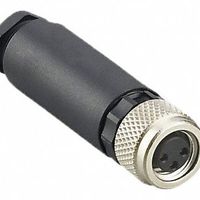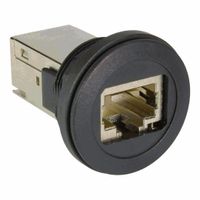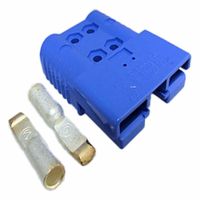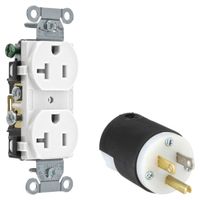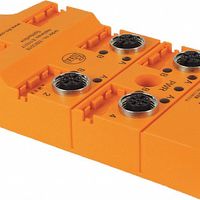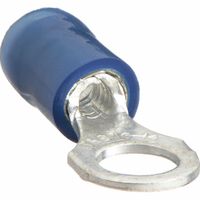Call +(254) 703 030 000 / 751 483 999 / 721 704 777
- Home
- Electrical
- Electrical Connectors Wiring Devices
.....Read More
Frequently Asked Questions
What are the different types of electrical connectors?
Electrical connectors are devices that join electrical conductors, allowing current to flow between them. They are essential for a vast array of applications, from simple household appliances to complex industrial machinery. Various types are designed for specific purposes, each with unique characteristics regarding their connection method, environmental resistance, and signal integrity.
One common type is the crimp connector, which uses deformation to create a secure, gas-tight connection between the wire and the connector. This method is highly reliable and widely used in automotive and aerospace industries. Another prevalent type is the solder connector, where wires are joined to the connector using solder, forming a permanent and robust electrical and mechanical bond. This is often found in circuit boards and delicate electronic components.
Screw terminals offer a simple and reusable connection, where wires are clamped down by a screw. They are popular in industrial control systems and building wiring due to their ease of installation and modification. Insulation displacement connectors (IDCs) pierce the wire's insulation to make contact with the conductor, ideal for quick and mass termination of ribbon cables.
For more demanding environments, sealed connectors are designed to protect against moisture, dust, and other contaminants, crucial in outdoor or harsh industrial settings. Furthermore, specific connectors cater to different signal types, such as RF connectors for high-frequency signals or fiber optic connectors for optical data transmission. The choice of connector type depends heavily on the application's electrical requirements, environmental conditions, and desired level of durability and maintainability.
How do you choose the right wire connector for a specific application?
Choosing the right wire connector for a specific application involves considering several critical factors to ensure safety, reliability, and optimal performance.
First, assess the electrical requirements. This includes the voltage and current ratings the connector needs to handle. Using a connector rated below the circuit's demands can lead to overheating, poor connections, and potential hazards.
Second, consider the environmental conditions. Will the connector be exposed to moisture, dust, chemicals, extreme temperatures, or vibrations? For outdoor or harsh environments, look for connectors with appropriate IP (Ingress Protection) ratings, UV resistance, or sealed designs.
Third, determine the wire type and gauge. Different connectors are designed for solid or stranded wires, and they have specific ranges for acceptable wire gauges (AWG). Ensure the connector's specifications match your wire to guarantee a secure and proper connection.
Fourth, evaluate the mechanical considerations. This includes the size and space constraints of the application, the need for disconnectability (e.g., quick-disconnect vs. permanent splice), and the level of vibration the connection will endure. For high-vibration environments, crimp connections or specialized vibration-resistant connectors may be necessary.
Finally, consider regulatory compliance and standards. Depending on the application (e.g., automotive, industrial, consumer electronics), specific industry standards or certifications may be required. Adhering to these ensures the connector meets safety and performance benchmarks. By carefully evaluating these factors, you can select a wire connector that provides a durable and safe connection for your specific needs.
What is the difference between circular and rectangular connectors?
Please tell me what topic you would like me to elaborate on.
How do you properly install a terminal block?
To properly install a terminal block, first ensure the power is off for safety. Mount the terminal block securely on a DIN rail or panel using the integrated mounting feet or screws. Strip the wire insulation to the recommended length as specified by the terminal block manufacturer, typically about 6-8mm, ensuring no loose strands. Insert the stripped wire into the terminal block's clamping unit, making sure it goes in fully. Tighten the screw or actuate the spring clamp to secure the wire firmly, checking for good electrical contact and no exposed copper. Repeat this process for all connections. For multi-conductor terminal blocks, ensure each wire is in its designated port. After installation, perform continuity checks if possible to verify correct wiring.
What are the common materials used in electrical connectors?
Electrical connectors commonly use various materials, primarily chosen for their conductivity, durability, and resistance to environmental factors.
For the conductive elements, copper alloys are prevalent due to their excellent electrical conductivity and mechanical strength. Brass (an alloy of copper and zinc) and phosphor bronze (copper with tin and phosphorus) are often used for pins and sockets because they offer good spring properties, ensuring reliable contact over time. Beryllium copper is also used for its high strength and conductivity, particularly in high-performance applications. These conductive parts are frequently plated with other metals to improve performance and prevent corrosion. Gold plating offers superior conductivity and corrosion resistance, ideal for critical applications. Silver plating provides high conductivity at a lower cost, but it can tarnish. Tin plating is a more economical option, offering good solderability and corrosion resistance.
The insulating bodies of connectors are typically made from plastics or ceramics. Common plastics include nylon, polycarbonate, PBT (polybutylene terephthalate), and LCP (liquid crystal polymer). These materials are selected for their dielectric strength, heat resistance, and mechanical robustness. For high-temperature or high-frequency applications, ceramic materials like alumina can be used due to their excellent insulation properties and thermal stability.
Outer shells and housings often utilize metals like aluminum or stainless steel for strength and EMI/RFI shielding, or robust plastics for lighter weight and cost-effectiveness. Sealing materials, such as silicone rubber or neoprene, are incorporated to protect against moisture and dust in harsh environments. The choice of materials ultimately depends on the connector's intended application, considering factors like current, voltage, temperature, environmental exposure, and cost.
How do you ensure a secure connection with plugs and receptacles?
Ensuring a secure connection with plugs and receptacles is crucial for electrical safety and reliable performance. One primary method is to ensure that the plug and receptacle are compatible in terms of voltage, current, and plug configuration (e.g., NEMA types). Mismatched components can lead to loose connections, overheating, and potential hazards.
Physical integrity is another key aspect. Both the plug and receptacle should be free from damage, such as bent prongs, cracks, or corrosion. Damaged components can compromise the connection and increase resistance, leading to heat buildup. Regular inspection and replacement of worn or damaged parts are essential.
When inserting a plug, it should fit snugly into the receptacle without excessive force or looseness. A loose connection can cause arcing, which generates heat and can lead to fire. Conversely, forcing a plug that doesn't fit correctly can damage the receptacle or the plug itself.
For critical applications or in environments where vibrations or accidental disconnections are a concern, features like locking plugs and receptacles, twist-lock mechanisms, or retaining clips can be used. These mechanisms provide an added layer of security, preventing unintentional disconnection.
Finally, proper installation by a qualified electrician is paramount, especially for permanent wiring. This includes correctly stripping wires, securing them to the terminals with appropriate torque, and ensuring proper grounding. Over-tightening can damage wires, while under-tightening can lead to loose connections and arcing.
What are the advantages of using modular connectors?
Modular connectors offer several key advantages that make them a popular choice across various industries. Their primary benefit lies in their flexibility and ease of use. They allow for quick and simple connections and disconnections, which streamlines installation, maintenance, and upgrades. This "plug-and-play" functionality reduces labor time and costs associated with wiring and troubleshooting.
Furthermore, modular connectors often feature standardized designs, promoting interoperability between different components and systems. This standardization simplifies inventory management and sourcing. They also contribute to enhanced reliability, as they typically offer a more secure and consistent connection compared to individual wire terminations, reducing the risk of errors or disconnections. Many modular designs are also built to withstand harsh environments, offering improved durability and resistance to factors like vibration, moisture, and dust. Finally, their compact size and efficient design can lead to space savings in electrical enclosures and overall system designs.
How do you troubleshoot connection issues in data and network interface connectors?
Troubleshooting connection issues in data and network interface connectors involves a systematic approach to identify and resolve the root cause. Start by checking the physical layer: ensure cables are securely plugged in, undamaged, and of the correct type (e.g., Cat5e/6 for Ethernet). Verify that network interface cards (NICs) are properly seated and their drivers are up to date.
Next, examine the link lights on both the connector and the connected device (e.g., router, switch). No lights or an amber light often indicate a physical connection problem. If lights are present, proceed to check network configurations. Confirm correct IP address settings, subnet masks, and default gateways, especially if using static IP assignments. For dynamic IP configurations, verify that a DHCP server is available and functioning.
Utilize command-line tools like "ping" to test connectivity to other devices on the network or to external websites. A successful ping indicates basic network connectivity. If ping fails, "ipconfig" (Windows) or "ifconfig" (Linux/macOS) can help confirm your network adapter's status. For more in-depth analysis, "traceroute" or "tracert" can identify where communication is failing along the network path.
Consider potential software conflicts or firewall restrictions that might be blocking connections. Temporarily disabling firewalls (with caution) can help diagnose if they are the cause. Finally, if the issue persists, try connecting to a different port, replacing cables, or testing with another known-good device to isolate the problem.
What are the safety standards for electrical connectors and wiring devices?
Electrical connectors and wiring devices are subject to various safety standards to ensure their safe operation and prevent hazards like electrical shock, fire, and overheating. In the United States, prominent standards are set by organizations like Underwriters Laboratories (UL) and the National Fire Protection Association (NFPA).
UL standards, such as UL 498 for Attachment Plugs and Receptacles and UL 1977 for Component Connectors, cover aspects like current-carrying capacity, insulation resistance, mechanical strength, and environmental suitability. These standards dictate rigorous testing protocols that devices must pass before they can be certified and bear the UL mark, indicating compliance with safety requirements.
The NFPA's National Electrical Code (NEC), or NFPA 70, is another critical resource. While not a product standard, the NEC provides installation requirements and guidelines that directly impact the safe use of connectors and wiring devices. It specifies proper wiring methods, grounding requirements, overcurrent protection, and suitable applications for different types of devices, all designed to minimize electrical risks in buildings and other installations.
Internationally, the International Electrotechnical Commission (IEC) develops standards like IEC 60320 for Appliance Couplers and IEC 60998 for Connecting Devices for Low-Voltage Circuits for Household and Similar Purposes. These global standards promote consistency and safety across different markets, facilitating international trade and ensuring a baseline level of safety for electrical products worldwide. Adherence to these standards is crucial for manufacturers to ensure product safety and for installers to guarantee safe electrical systems.
How do you maintain and clean electrical connectors to ensure longevity?
To maintain and clean electrical connectors for longevity, begin by ensuring power is disconnected to prevent accidents. Use a specialized electrical contact cleaner, often an aerosol, that is residue-free and safe for plastics. Apply it liberally to flush away dirt, dust, and grime. For stubborn corrosion, a soft brush or cotton swab can be used, but avoid abrasive materials that could scratch the contacts.
Regular inspection is crucial. Look for signs of wear, discoloration, or loose connections. Ensure proper seating and retention of the connectors. For outdoor or harsh environments, consider using dielectric grease after cleaning to provide a protective barrier against moisture and corrosion, which also helps improve conductivity. Avoid over-lubricating, as excessive grease can attract dust. Store unused connectors in a clean, dry environment to prevent premature degradation. Following these steps helps ensure reliable and long-lasting electrical connections.
